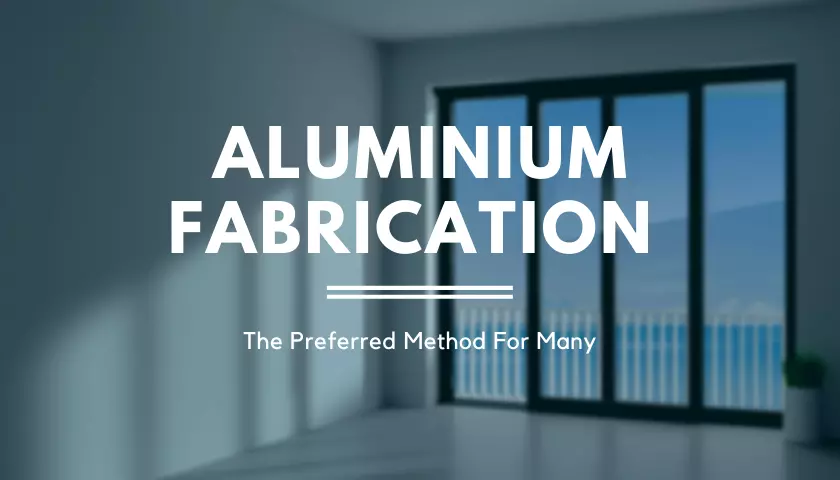
Aluminium fabrication is defined as the process of cutting, shaping, and extruding aluminium to form a finished product. The processes involved spans widely from welding and stamping to bending, extruding and shearing, among others. For some time, many industries have benefitted from aluminium fabrication especially in the construction sector where companies require metal structures. Here are some commonly asked questions and answers about aluminium fabrication.
Why Is Aluminium Fabrication The Preferred Method For Many Companies?
The term “fabrication” means to make something from raw materials whether it’s wood, plastic or a type of metal. Choosing a material is one of the most critical decisions as it impacts all aspects of the production and finishing processes.
Compared to other types of metal, it’s easy to see why aluminium is a popular choice for fabrication as it is stronger, more lightweight, corrosion-resistant, non-sparking and non-magnetic.
As such, there is a big demand for aluminium fabrication services across the world, especially if you consider your home, office building and shopping centres using aluminium. The truth is, aluminium is all around us with some of the most common being gates and frameworks used for doors, windows and showers.
Is Aluminium Easy To Work With?
Aluminium alloys are typically supplied as semi-finished products, either in the form of sheets, plates, coils, extrusions, tubes or wires. Regardless of the form, fabricating aluminium into finished products is relatively straightforward using a wide range of processes mentioned earlier.
As it’s softer, lightweight and more heat-resistant, working it into new shapes during the aluminium fabrication process is easier than other metals and it’s better at conducting electricity. It also reacts easily with other chemical elements, especially oxygen, and quickly forms an outer layer of aluminium oxide if left in the air.
Recommended: The History Of Aluminium
What Is Aluminium Fabrication Used For?
Pure aluminium is very soft but quite durable, especially when you mix it with copper. This makes it perfect when creating something strong, lightweight and hard-wearing with the ability to survive high temperatures. Some examples include components on an aeroplane, a car engine, gears, knobs, camera parts, pipe stems, radio parts and even mobile phones.
On the opposite side of the scale is food packaging as you don’t need something as strong but still malleable enough. Here, you would mix it with magnesium to help make the final product easier to shape and seal.
When you want something to carry electricity over long distances, from power plants to homes and factories, you’d combine aluminium with boron as it conducts electricity almost as well as copper but is lighter, less expensive and it doesn’t droop in hot weather.
How Much Faster Is The Aluminium Fabrication Process?
The machinability of a metal depends on its physical properties and cutting conditions. Aluminium is easier to machine than many other metals as it chips faster and can be relatively easy to shape.
By “chipping easily”, we imply that the cutting tool spends more time and effort cutting the work-piece, instead of chips it creates. As aluminium is easy to shape, machining can be up to 3x to 4x faster than iron or steel.
How Is Aluminium Used In Construction?
As mentioned earlier, you can find aluminium in most of the environment around you. Did you know that 25% of all aluminium produced worldwide is used in construction?
From the glass faces of skyscrapers supported by lightweight and sturdy aluminium frames to entertainment, trade and exhibition centres resting on sturdy but lightweight aluminium frameworks.
Stadiums, pools and other sports facilities also rely on the aluminium fabrication process to complete the structures. Over the years, aluminium has become one of the most popular materials among builders, architects and designers for many reasons, including the following:
- Lightweight but durable
- Not prone to corrosion
- Non-toxic
- Easily malleable into nearly any shape
- Create structures that cannot be made from wood, plastic or steel
Aluminium Fabrication and Finishing Services At PRV Engineering
At PRV Engineering, we manufacture products in all materials, from the most basic mild steels to the more exotic Monel, Inconel, Hastelloy and Titanium. Thanks to our state-of-the-art machining centre, we can undertake fabrication up to 10 tonnes in single weight capacity for various applications.
We provide a high-quality service to many industries that rely on aluminium fabrication and finishing including construction, aerospace and automotive among others. Over the last few decades, our team has built a comprehensive portfolio of completed projects involving processes such as deep hole drilling, waterjet cutting and aluminium fabrication.
Whatever your requirements, our team is here to help. Call us today on 01495 707962 or visit our website to find out more.


 Mail:
Mail: 



